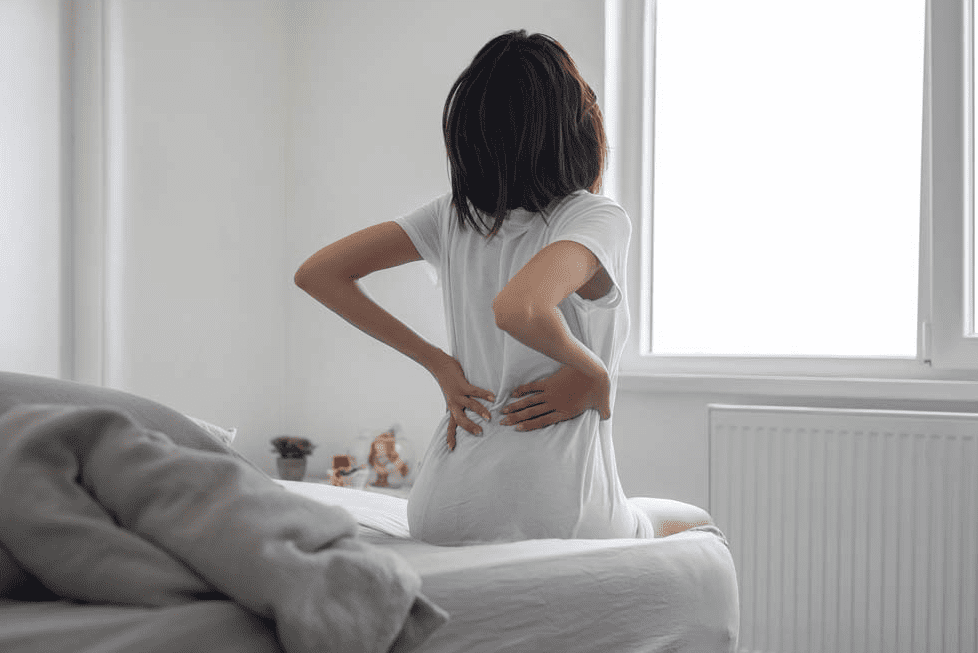Few things are more frustrating than climbing into bed after a long day—only to toss and turn because of lower back pain. Whether it’s a dull ache, a sharp jolt, or stiffness that makes it hard to roll over, back pain can quickly rob you of the deep, restorative sleep your body needs.
And the worst part? Poor sleep makes your pain worse the next day.
If this sounds familiar, you’re not alone. At Peak Potential Physiotherapy & Wellness, we work with people every week who are desperate to find a way to sleep through the night without aggravating their back pain.
In this guide, we’ll break down the anatomy behind lower back pain, the root causes of nighttime discomfort, the best sleeping positions for relief, and—most importantly—how you can finally get the rest you deserve.
Understanding Lower Back Pain and Why Sleep Can Make It Worse
The lower back, or lumbar spine, is a critical weight-bearing region made up of vertebrae, intervertebral discs, ligaments, muscles, and nerves. When any of these structures are irritated, inflamed, or misaligned, it can result in pain—especially when your body is trying to relax and heal overnight.
Why does back pain feel worse at night? A few common reasons include:
-
Poor sleeping posture that puts strain on the spine or surrounding muscles
-
Tight hip flexors or hamstrings from a sedentary day
-
Bulging or herniated discs becoming more compressed while lying down
-
Inflammation pooling in affected tissues when circulation slows at rest
In short, your sleep position may be silently working against your recovery—unless you learn how to adjust it.
Common Causes of Lower Back Pain That Interfere with Sleep
At Peak Potential, we always look at the root cause of pain, not just the symptoms. Here are the most common culprits behind nighttime back pain:
1. Injuries
-
Acute strains or sprains from lifting or twisting
-
Whiplash or car accidents
2. Medical Conditions
-
Herniated or bulging discs
-
Sciatica (nerve impingement)
-
Degenerative disc disease
-
Osteoarthritis or spinal stenosis
3. Postural and Structural Issues
-
Anterior pelvic tilt (arched low back)
-
Scoliosis
-
Leg length discrepancies
-
Weak core and glute muscles
4. Lifestyle Habits
-
Prolonged sitting
-
Poor lifting mechanics
-
Lack of mobility or stretching
-
High stress (tightening the lower back muscles unconsciously)
When lower back pain is chronic or worsens at night, it’s a sign your body needs more than a new pillow—it needs a strategic approach to healing.
Diagnosis – When to Get Help for Your Back Pain
While some nighttime back pain can be managed at home, it’s important to know when to seek expert care.
You should speak to a physiotherapist if:
-
Pain persists for more than 2 weeks
-
Pain radiates into your leg or foot
-
You wake up multiple times per night due to discomfort
-
There’s numbness, tingling, or weakness in the lower body
-
You’re relying on painkillers or muscle relaxants to sleep
At Peak Potential Physiotherapy & Wellness, our back pain assessment includes:
-
A full spinal and postural analysis
-
Strength and mobility testing
-
Functional movement screening
-
Discussion of sleep habits, mattress type, and nighttime patterns
The goal? To uncover the underlying reason for your pain—and develop a personalized plan to fix it.
Treatment Options – Relieving Pain to Sleep Better at Night
Depending on the cause of your pain, your treatment plan may include:
In-Clinic Physiotherapy
-
Manual therapy to release tight muscles
-
Spinal mobilization techniques
-
Dry needling or cupping
-
Core activation and hip mobility work
-
Progressive strengthening to support spinal alignment
At-Home Adjustments
-
Correct sleeping posture (see below)
-
Use of pillows to support the lumbar spine
-
Heat application before bed to relax muscles
-
Stretches and mobility routines designed by your therapist
Remember: dry needling, massage, or stretching may feel great—but without correcting the cause (like weak glutes or tight hip flexors), the pain will return.
Prevention Tips – How to Sleep with Lower Back Pain the Right Way
Here’s what we recommend for our clients struggling with back pain at night:
1. Choose the Right Sleeping Position
-
On your back with a pillow under the knees: This promotes spinal neutrality and takes pressure off the lower lumbar discs.
-
On your side with a pillow between the knees: Ideal for people with hip or SI joint discomfort. Make sure your hips are stacked and your spine stays aligned.
-
Avoid sleeping on your stomach: It forces your back into excessive extension, increasing strain on the lumbar spine.
2. Use the Right Mattress and Pillow
-
A medium-firm mattress is typically best for back pain sufferers—not too soft, but not overly rigid.
-
Ensure your head pillow supports the natural curve of your neck without pushing it forward.
3. Try These Bedtime Stretches
-
Knee-to-chest stretch
-
Pelvic tilts
-
Child’s pose
-
Figure-four stretch (for tight hips and piriformis relief)
Ask your therapist at Peak Potential to demonstrate a customized sleep routine based on your specific symptoms.
4. Support Core and Hip Strength Long-Term
Building long-term resilience means strengthening the core, glutes, and posterior chain. Your physiotherapist may guide you through:
-
Bird-dogs
-
Side planks
-
Glute bridges
-
Dead bugs
-
Controlled hip rotations
Ready to Wake Up Without Back Pain?
You don’t have to live with sleepless nights and groggy mornings. At Peak Potential Physiotherapy & Wellness, we help patients not only reduce pain—but understand the why behind it.
If you’re struggling to figure out how to sleep with lower back pain, our team can help create a treatment plan that relieves discomfort, restores alignment, and improves your sleep quality—so you can wake up feeling strong, refreshed, and pain-free.
Book your consultation today and take the first step toward sleeping better—and living better.
We’re here to help you rest, recover, and reach your peak potential.


